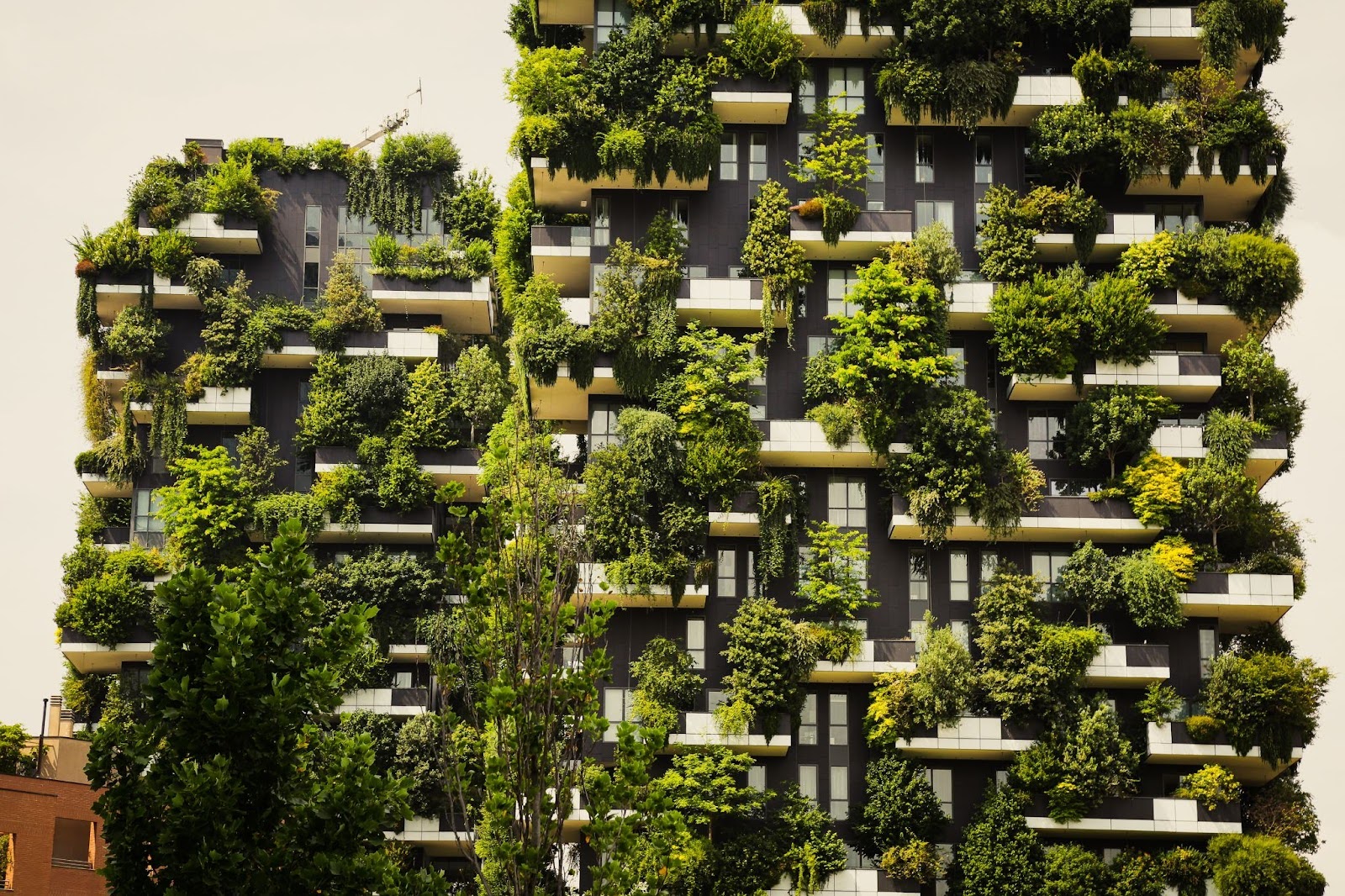Since the time of the Persians and Ancient Romans, balconies have adorned houses, providing opportunities to gossip with neighbours, dry the washing and grow garden retreats.
It’s not only possible to establish a balcony forest, it's highly beneficial. Greenery in front of windows and stretches of concrete provides a natural insulation against heat and freezing temperatures, and in the concrete jungles of cities around the world, creating gardens not only helps to regulate temperature, it also improves air quality and our wellbeing.
That’s all very well, but if you’ve never had any luck keeping one plant alive, growing a whole garden is a very daunting prospect. To help you on your way, below are six tips for you to consider.
1. Plenty of pot-sibilities
When deciding how to grow your garden, a key aspect to consider is growing container types. Measure your space and decide how much of the area you would like to fill with plants. If you want to maximise the growing space, rectangular pots and planters are a great option because they can be sandwiched against the wall, and each other, without any wasted space between them. You can go for small rectangle pots, a built up garden bed, Hampton style planter boxes, or a combination of all three!
2. Let's get vertical, vertical
If your balcony is so small it’s almost pointless, don’t despair, vertical gardens provide the perfect solution. Building your own vertical garden can be as simple as drilling half-moon pots into a wall to create a cascade effect. If you want something a bit more complicated you can try a PVC pipe version or a mega pyramid tower.
When buying a vertical garden you can choose between freestanding, fixed, hanging or hydroponic. The number of growing spots in a set-up ranges, if you want to create a dense wall of growth you can purchase kits with minimal spacing between pots.
3. Here comes the sun
If you’re intending to grow only moss and algae, you can skip to tip number four as these gloomy plants don’t require any sun. For most other plants, however, plenty of sunlight is a big deal.
If you’ve not paid much attention to your balcony’s sun exposure, spend a day tracking the light. Every hour or so, place a marker with the time written on it at the edge of the shadow and by the end of the day you can chart the hours of sunlight that shine on your balcony.
Looking at the tags that come with plants gives you a guide on its light, watering and spacing needs. Typically a plant will need low, part, or full sun but you may also see labels with partial shade and full shade instead. If you’re looking for some low-maintenance blooms that will be more likely to thrive on your balcony space, then check out this list of our favourite top 6 easy flowers to grow.
4. Feeding your soil-mate
Get your plants off to a great start with soil tailored to their needs and a nourishing feast. Some plants, including orchids, tomatoes and Australian natives, have specific potting mixes formulated to maximise their growth. They generally contain a soil wetting agent, which helps retain moisture, and a slow-release fertiliser that lasts between 3-6 months.
For unfussy plants, a general soil or potting mix works well, just add soil wetter and slow-release fertiliser when planting. After planting, and on a regular basis thereafter, water your plants with a seaweed mixture or worm ‘juice’ as an organic fertiliser to encourage lush growth.
5. Bee-friend the wildlife
Prepare yourself for some housemates, the insects are coming. Helpful and destructive insects will visit your garden, but if you grow some companion plants and flowers you may be able to keep the nasties to a minimum.
Companion planting involves growing plants that have a beneficial effect on other plants nearby. Benefits include protection against the elements, providing nutrition, chemically deterring insects or invasive roots, and attracting predators to eat pests.
Growing flowers is a surefire way to attract pollinators like bees, butterflies and certain beetles. Flowers are also likely to attract some helpful predator insects, such as ladybirds, which eat pests like aphids.
6. Plant-y of plants
Before heading to the nursery, decide whether to grow edibles, ornamentals or a combination of both.
Edibles don’t necessarily have to be annually grown vegetables or herbs, you can try berries and even fruit trees. There are a multitude of Australian native plants that produce edible leaves, nuts, seeds, fruits, and yams that have the added benefit of supporting native insects and birds.
If flowers don’t appeal to you but you still want splashes of colour and a variety of textures, choose plants with striking leaves. You can find green leaves in a thousand different tones, and leaves that come in whites, yellows, reds, purples and everything in between.
~
Creating a thriving balcony garden won’t happen overnight, but with these tips in hand you can start on your botanical journey. As you pour hard work, time, and care into your garden, the joy, satisfaction and calm it provides makes it a perfect retreat for busy city living.
